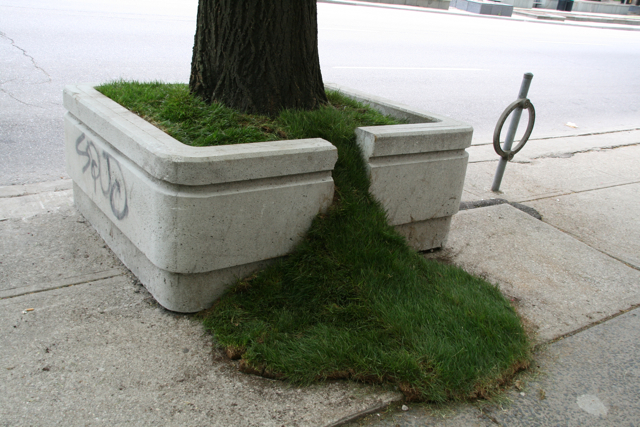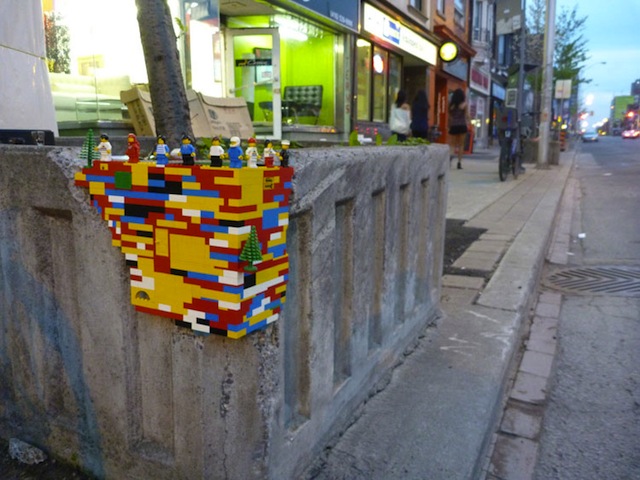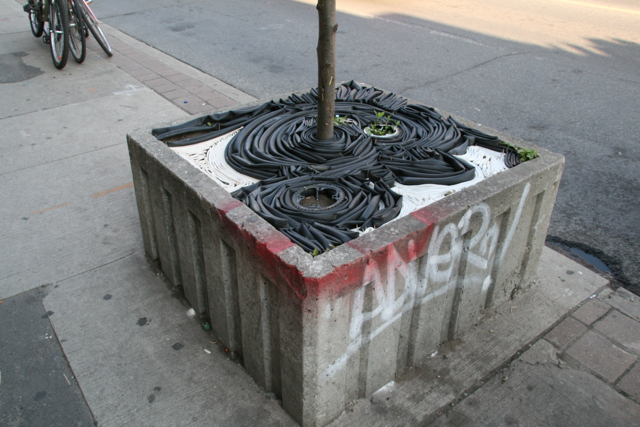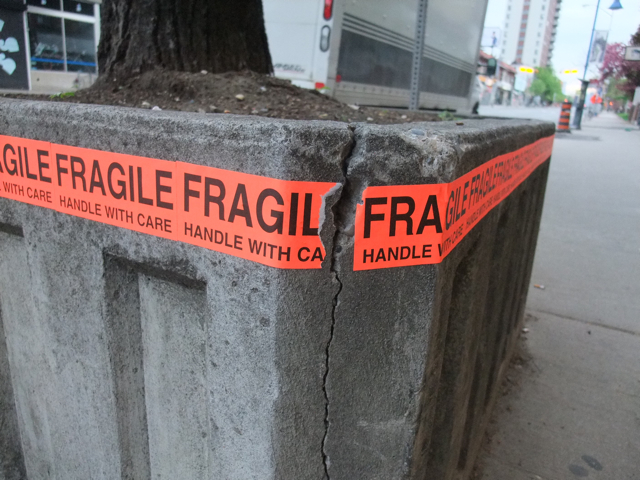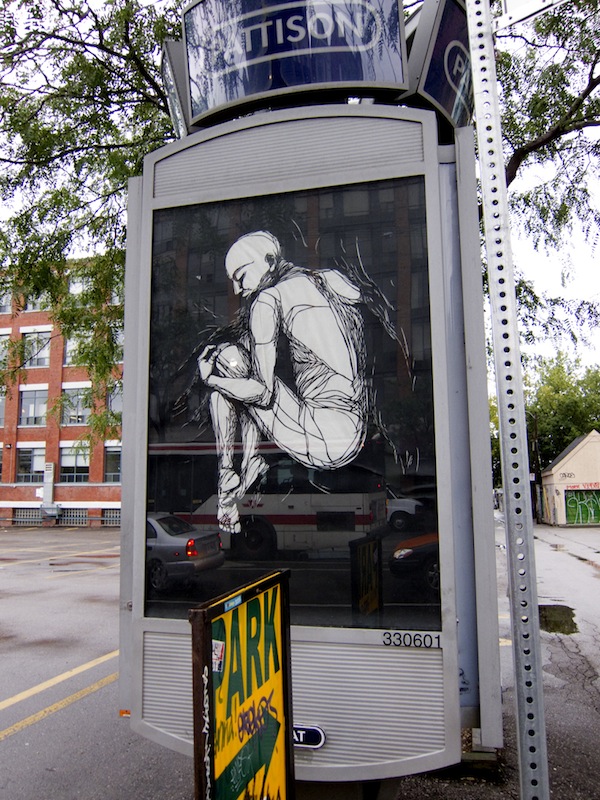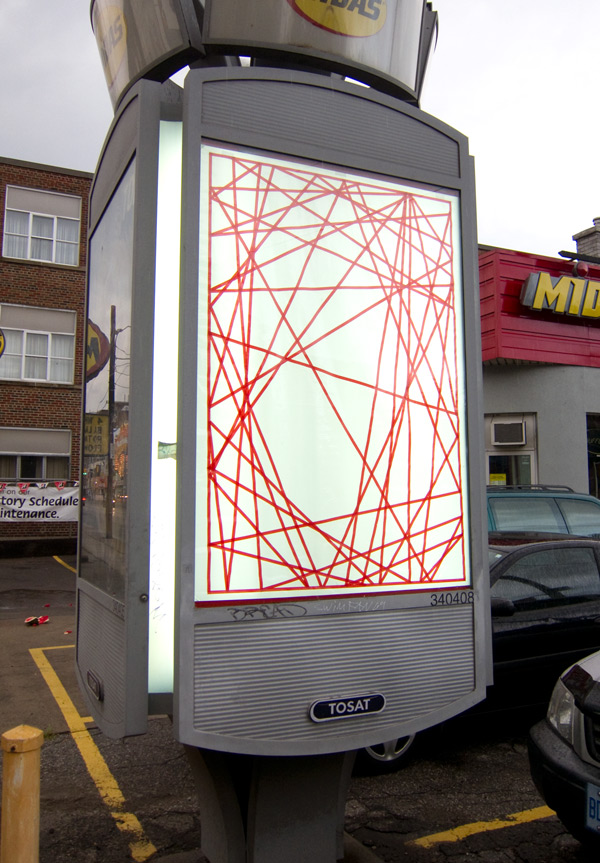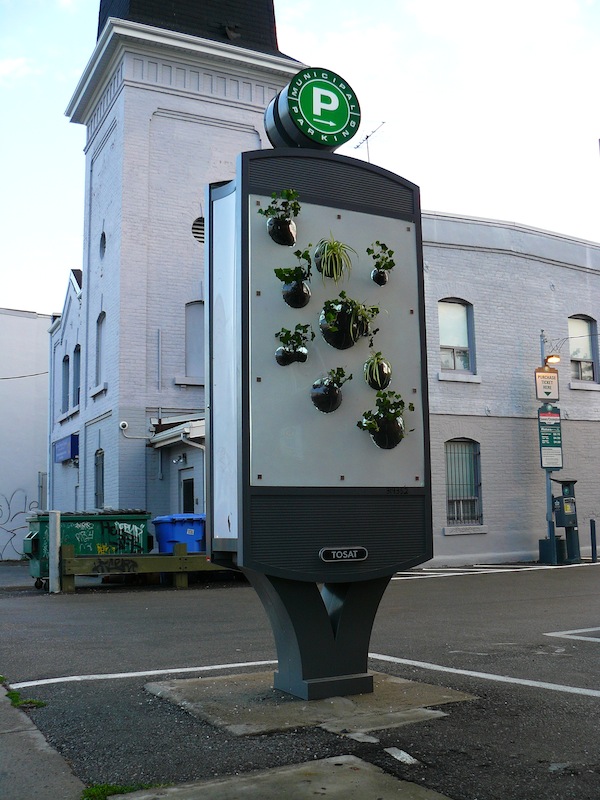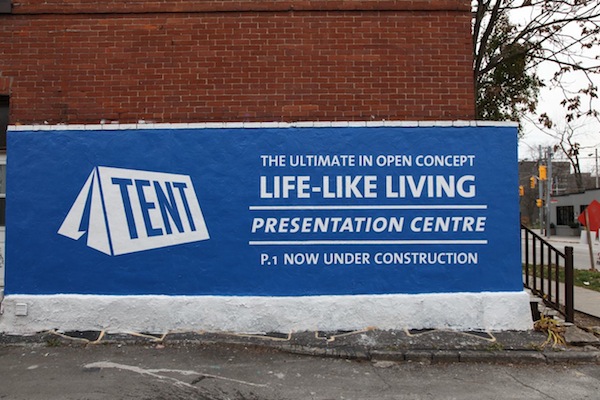
Recently, Sean Martindale tried something interesting in Toronto. For TENT, Martindale has stolen outdoor advertisements for condos and reused them to make tents throughout Toronto. Here are a few photos:
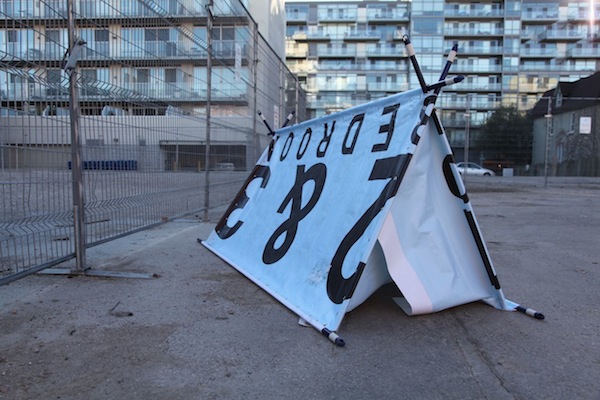
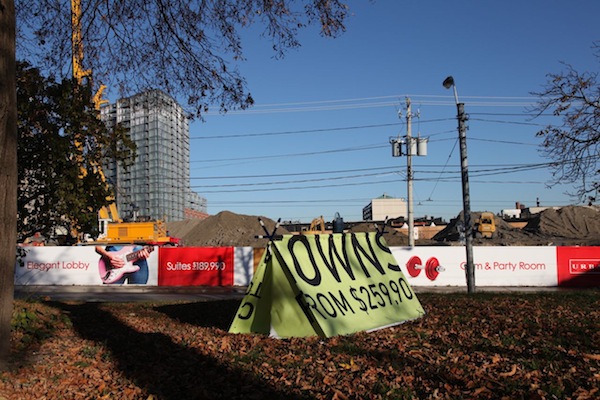
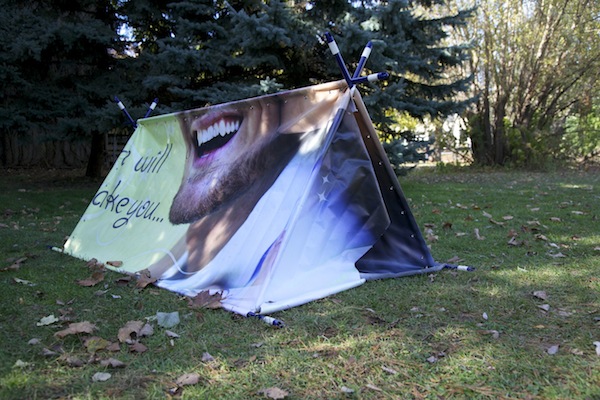
These photos have been sitting in my email inbox for nearly a month now because I’ve been thinking about them. TENT breaks one of the most important guidelines to making good street art (IMHO). Generally speaking, street art should have the potential to be seen by the public and (on some level) understood or acknowledged by any passersby. Dan Witz used to place random bits of metal on the street, but he realized that nobody would notice what he was doing or recognize it as art outside of the context of a gallery or museum. Of course, there are lots of examples where that isn’t true, but it’s a general guideline that applies to street art, particularly street art with a political message like TENT. Some successful examples that don’t follow this guideline would be Blu’s animations where the end result for passersby is a white wall, Jordan Seiler’s ad takeovers where the point is often to get the public to not notice his work at all and The Underbelly Project which was intentionally difficult for the public to see in person. Like those projects, TENT is best viewed online with some explanation. A random person seeing those tents in the flesh would probably not understand what they were made of, why they were made or that they were meant as art. It’s art that’s done outdoors, but maybe not street art in a most traditional sense.
But I still like TENT. It has a message, it gets rid of advertising and it provides a functional end-product. And it’s artwork that has kept me thinking even when I’m not looking at it.
10 years ago, I don’t think TENT would have been a successful project as street art. It would still get rid of some advertising and possibly providing temporary housing for people, but that’s valuable political activism which would not be recognized as art by anyone besides Martindale. Now though, the internet has changed things. Thanks to the internet, Martindale can provide the needed explanation of TENT without the constraints of a gallery (although there was a temporary exhibit in a pop-up space last month). Street art is meant to be viewed in the flesh, but the fact is that many fans of street art, for a variety of reasons, see more street art online or in books than they see in person. Projects like TENT take advantage of that. It was covered on major blogs and that’s how people found out about it. TENT is as much about sculpture as it is about photography and distribution. Even if TENT doesn’t follow the usual strategies of street art projects, the goals still align with the goals of other street artists. The results were just achieved differently.
The question remains though: Is this way of doing street art a positive evolution of the genre, a usurping of the public space by “gallery art” or something else entirely?
Photos by Sean Martindale
